Recent Water Damage Posts
Water Flooding Due to a Burst Pipe: SERVPRO of Central Schaumburg / West Bloomingdale to the Rescue
8/2/2024 (Permalink)
A burst pipe can cause significant water flooding in both commercial and residential properties, leading to extensive damage if not addressed quickly. SERVPRO of Central Schaumburg / West Bloomingdale is here to help you manage the situation effectively.
If you experience a burst pipe, first turn off the water supply to prevent further flooding. Next, contact us immediately. Our team is available 24/7 to handle emergency water removal, drying, and repairs. We use advanced equipment and techniques to restore your property and minimize damage.
Timely action is crucial to prevent mold growth and structural issues. Trust SERVPRO of Central Schaumburg / West Bloomingdale for prompt, professional service to get your property back to normal. Contact us (630) 942-8440 today for expert water damage restoration.
Can Drain Cleaner Damage Pipes?
7/27/2023 (Permalink)
Clogged drains can be a frustrating issue in any household or commercial property. When faced with a stubborn clog, many people turn to drain cleaners as a quick and convenient solution. While drain cleaners can effectively dissolve blockages, there are concerns about their potential impact on pipes. In this blog post, we will delve into the topic of whether drain cleaners can damage pipes and explore the associated risks.
Understanding Drain Cleaners
Drain cleaners are chemical-based products designed to break down and dissolve organic matter, grease, hair, and other substances that cause clogs in drains. They are available in two main types: caustic drain cleaners and acidic drain cleaners. Caustic drain cleaners typically contain substances like sodium hydroxide or potassium hydroxide, while acidic drain cleaners feature ingredients like sulfuric acid or hydrochloric acid.
The Potential Risks to Pipes
Corrosion: Some drain cleaners, particularly acidic ones, can be corrosive to certain types of pipes. Older, corroded pipes made of materials like galvanized steel or copper may be more vulnerable to damage. Prolonged or frequent exposure to corrosive drain cleaners can weaken pipes, leading to leaks or even pipe failure over time.
PVC Pipe Damage: PVC pipes are commonly used in modern plumbing systems due to their affordability and durability. However, certain types of drain cleaners, especially those containing high concentrations of chemicals, can cause PVC pipes to soften, warp, or even dissolve. This can result in extensive damage to the pipes and the need for costly repairs or replacements.
Health and Environmental Concerns: Drain cleaners contain strong chemicals that can be harmful if mishandled or if their fumes are inhaled. Improper use or mixing of drain cleaners can result in dangerous reactions. Additionally, when drain cleaner residue enters the wastewater system, it can have negative environmental impacts, affecting water quality and aquatic life.
Precautions and Alternatives
Read and Follow Instructions: When using drain cleaners, carefully read and follow the instructions provided by the manufacturer. Pay attention to recommended usage amounts, contact time, and safety precautions. Never exceed the recommended dosage, as it can increase the risk of pipe damage.
Consider Mechanical Methods: Instead of relying solely on chemical drain cleaners, consider using mechanical methods to clear clogs. Tools such as plungers, drain snakes, or augers can often effectively remove blockages without the need for harsh chemicals. These methods are generally safer for your pipes and the environment.
Seek Professional Help: For persistent or complex clogs, it is advisable to consult a professional plumber. They have the expertise and tools to address the issue safely and effectively. Professional plumbers can utilize techniques like hydro jetting or pipe inspection cameras to clear clogs without resorting to potentially damaging drain cleaners.
Preventive Measures: Regular maintenance and prevention are key to avoiding clogged drains. Implement practices like using drain covers to catch debris, avoiding pouring grease down the drain, and periodically flushing drains with hot water or a mixture of vinegar and baking soda to help keep them clear.
While drain cleaners can be effective in unclogging drains, they do come with potential risks to your pipes and the environment. The corrosive nature of certain drain cleaners can damage pipes, particularly older or PVC pipes. It's essential to exercise caution when using these products and consider alternative methods whenever possible. By being mindful of proper usage, exploring mechanical solutions, and seeking professional assistance when needed, you can effectively maintain your pipes' integrity and keep your plumbing system in good condition for the long term.
5 Steps to Take If Your Dishwasher Leaks: A Guide to Fixing the Issue
3/11/2023 (Permalink)
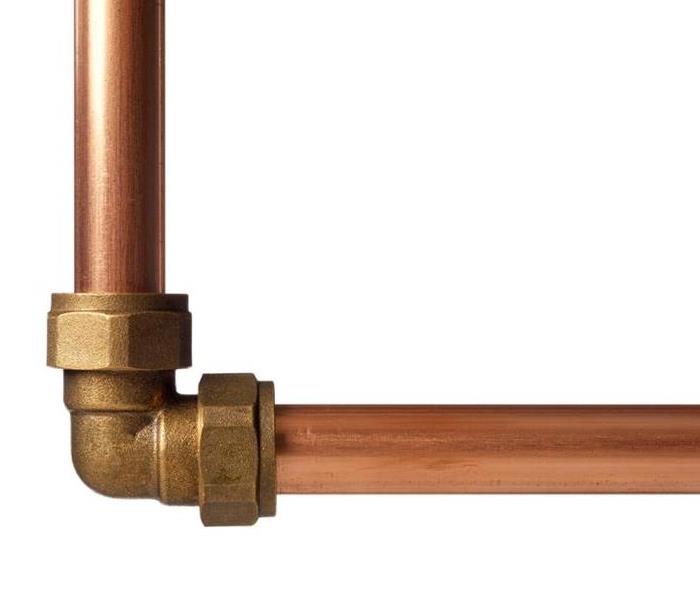 Leaking dishwashers are a common problem that can leave your kitchen with a water loss.
Leaking dishwashers are a common problem that can leave your kitchen with a water loss.
A dishwasher is a modern-day convenience that saves us a lot of time and effort in the kitchen. However, like any other appliance, it can encounter problems from time to time. One of the most common issues that a dishwasher can face is leakage. A leaking dishwasher can cause water damage to your kitchen floor, cabinets, and even the walls. Therefore, it is essential to address the issue as soon as possible. Here are some steps to follow if your dishwasher leaks.
Turn off the power and water supply
The first step is to turn off the power and water supply to your dishwasher. You can do this by turning off the circuit breaker that powers your dishwasher or unplugging it from the wall socket. Also, turn off the water supply valve that connects to your dishwasher. This will prevent any further damage and keep you safe while you try to fix the issue.
Identify the source of the leak
The next step is to identify the source of the leak. Check the dishwasher's door seal, pump, hoses, and valves for any cracks, holes, or loose connections. If you cannot identify the source of the leak, it is best to call a professional plumber or appliance repair technician to help you.
Clean up the water
Once you have identified the source of the leak, you need to clean up the water. Use a mop or towels to soak up the water on the floor and around the dishwasher. If the water has seeped into the cabinets or walls, use a dehumidifier to dry the area thoroughly.
Fix the issue
If the leak is due to a loose connection, tighten it. If there is a crack or hole, replace the damaged part. In some cases, the issue may be with the door seal or the pump, and you may need to replace them. If you are not confident in fixing the issue yourself, it is best to call a professional.
Test the dishwasher
Once you have fixed the issue, test the dishwasher to ensure that it is working correctly. Run a cycle to see if there are any leaks. If the problem persists, it may be a more significant issue that requires professional attention.
In conclusion, a leaking dishwasher is a common problem that can cause water damage to your kitchen. By following the steps above, you can identify the source of the leak and fix the issue. If you are not confident in fixing the problem yourself, it is best to call a professional to avoid causing further damage. Remember to always turn off the power and water supply before attempting any repairs.
How To Properly Snake a Clogged Pipe
11/12/2022 (Permalink)
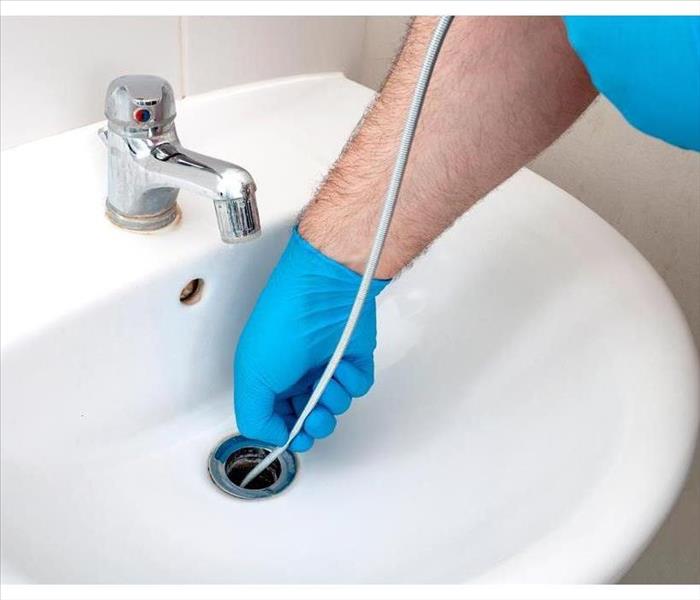 The main benefit of using a pipe snake is that they are much easier to use.
The main benefit of using a pipe snake is that they are much easier to use.
How to Snake a Pipe
Don't panic, even if you don't know the first thing about plumbing, it's easy to learn how to snake a pipe. A snake is just a metal coil that can be inserted into your pipes and then turned to push debris further down the line. Once any debris has been cleared out of the way, you can use your faucet again. Here's what you need.
Go to the hardware store and get a pipe snake (this is just a metal coil you can feed down your pipes).
A pipe snake is a metal coil that you can feed down your pipes, much like a snake. They're relatively inexpensive and should be available at your local hardware store, but if you don't have one on hand, it's worth going out to buy one for this situation.
If you've got yourself a pipe snake, all you need to do is feed the metal coil down the pipe until it reaches where the clog is located. Then, pull back on the handle of your tool while pushing forward on it at the same time (this will allow the clog to pass through).
The main benefit of using a pipe snake over something like drain cleaner (which can damage your plumbing) or plunging (which requires special equipment) is that they are much easier to use and require no special training or skill level whatsoever.
Put the snake into the pipe and turn its handle.
This can be done in a few different ways, but they all involve inserting the end of the snake into your drain opening until you've reached its maximum length. Then, turn its handle clockwise and feed it down as far as possible.
Once you've reached that point, turn your attention to turning off any valves or water sources nearby so that everything can drain completely. If there isn't a valve in sight and all you have is cold water coming out of your taps, try flushing them out with warm water from a bucket before draining them at full blast through all their outlets.
Insert it about a foot at first, then keep adding more as you move it down.
The first thing you need to do is insert the snake into your drain, but not too far. The idea here is that you want enough of the snake inside so that when you pull on it, it doesn't fall all the way out of your drain. The next step is to gently push down on your plunger and push as much water down your drain as possible. After this has been done, place more of the snake into your pipe until about three feet of it has gone in there. Now pull up slightly on the snake before pushing back down again with more force than before; this will cause even more water from inside where clogs occur to come out through another opening within your pipes. Repeat these steps until no more debris comes out or until it feels like nothing else could possibly be left behind (if there isn't any improvement at all after following these steps).
Keep adding more until the water runs freely.
If you're still not getting any results, it might be time to try a different type of snake. If you have a toilet drain clogged with paper towels and Kleenex, the best tool to use will be one designed for plumbing pipes. But if you're trying to clear out tree roots—the culprit behind most drain clogs in residential drains—you may want to reach for a larger diameter snake designed specifically for that purpose.
We hope we've convinced you to give snaking a go. It's easy, quick, and effective—and if you're like us, you'll be glad for another reason to avoid calling a plumber! If it still sounds intimidating, think about what happened when your toilet was clogged: You probably did some research online or asked someone who knows plumbing for advice. If so, this article fits the bill perfectly: It explains how snaking works in simple terms and provides step-by-step instructions on how to do it yourself.
Why Your Water Heater is Making Noises
7/30/2022 (Permalink)
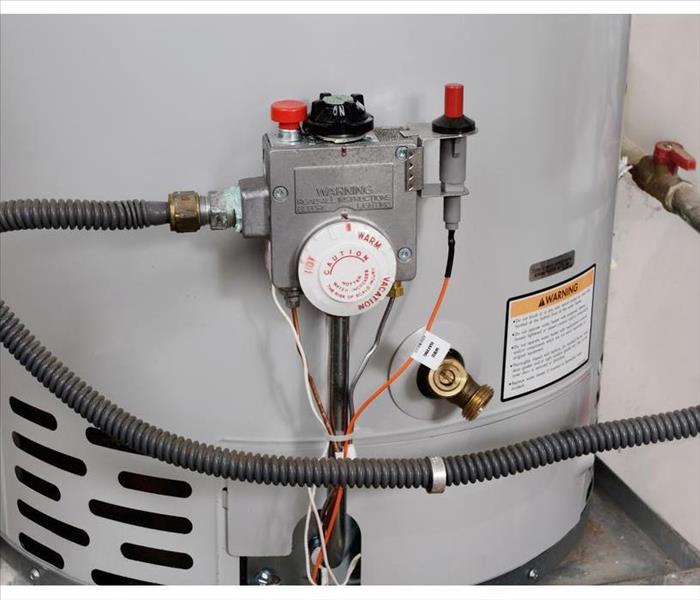 An annual water heater flush is generally the best way to maintain your equipment.
An annual water heater flush is generally the best way to maintain your equipment.
Most noises that are made by water heaters come from those that have a tank. If you have a tankless system in Bartlett, IL, it might make a clicking noise when the flow switch starts and stops the flow of water, which is normal. However, if it makes a lot of noise when turning on, there may be too much calcium from hard water. This might indicate the need for a water softener. Other noises could be related to a dirty fan, a leak in the sealed combustion, or a problem with the burner. So, what about noises with a tank water heater?
Types of Water Heater Sounds
Crackling or Popping
Sediment can accumulate around the element tubes and begin making popping sounds as the water is forced through the sediment. If you have an older heater, this is more common. If the sound is more of a rumble, there may be sediment inside the tank which can be fixed with an annual water heater flush and a good cleaning. Similar noises can be made just by the metal tank expanding and contracting, which is normal.
Hammering or Knocking
If you hear a knocking sound inside your walls, this is usually from the pipes heating, especially when water going to and from the tank is turned off abruptly, such as from a dishwasher or toilet. This causes pipes in the walls to move, and while it’s not damaging to your water heater, it could cause wall damage eventually. Water hammer arrestors are made to solve this issue.
Screeching
A screeching or screaming sound usually indicates that water is being forced through a small opening, caused by a slightly closed valve at your water heater or the appliance you’re using, such as a sink.
Tapping or Ticking
This is often a normal sound, caused by the check valves or heat traps in the pipes on top of your heater. These are used to make sure water does not flow in the wrong direction.
Maintaining Your Water Heater
An annual water heater flush is generally the best way to maintain your equipment to ensure it lasts as long as possible while functioning correctly and efficiently. It’s also useful to check the hot water supply lines to all of your sinks once in a while to ensure you won’t be needing any water damage repair out of the blue!
3 Reasons Your Water Heater is Making Noise
5/25/2022 (Permalink)
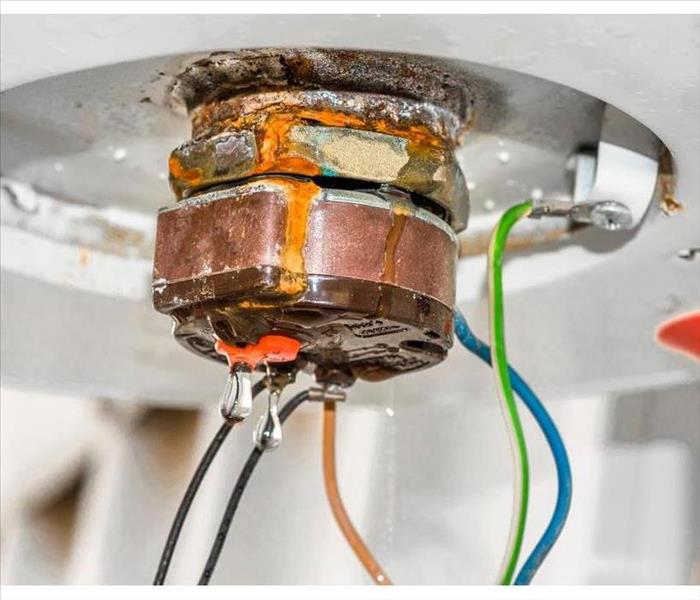 Leaking in the hot water tank.
Leaking in the hot water tank.
Three Causes of Noisy Water Heaters
When the water heater in your Schick, IL, home starts to make noise, you never want to ignore it. Some issues that are left unaddressed can turn into big problems down the road. Here are three reasons your hot water tank is making noise.
1. Sediment in Your Water Heater
Over time, hot water tanks collect sediment. When the sediment isn't regularly flushed, you could hear bubbling or cracking sounds coming from your tank. These noises occur because the water trapped between the sediment layers heats up and forces its way through.
Most water damage mitigation specialists suggest that you do a water heater flush at least once a year. The flush will ensure that you clean out the sediment and extend the life of your plumbing fixture.
2. Loose Heating Element
If you constantly hear a humming noise coming from your hot water tank, it likely means that you have a loose heating element. The flowing water around the element causes vibrations, which is responsible for the humming.
While there isn't much to worry about with a loose heating element, you can have a plumber tighten it if the noise is driving you crazy.
3. Leak in the Hot Water Tank
A hissing sound coming from your water heater usually indicates a leak. The sound is from the water or steam escaping from a hole in the unit or one of the pipes. Look for water stains around the unit to help identify the problem area. Ensure that all connections are tight and secure. If you can't safely stop the leaking, immediately call a plumber to come out and repair or replace the unit.
A hot water tank can make a lot of unsettling noise. Thankfully, understanding the different reasons it's making noises can help you better understand what is happening with your fixture and how to fix it.
Avoid Common Plumbing Issues
3/29/2022 (Permalink)
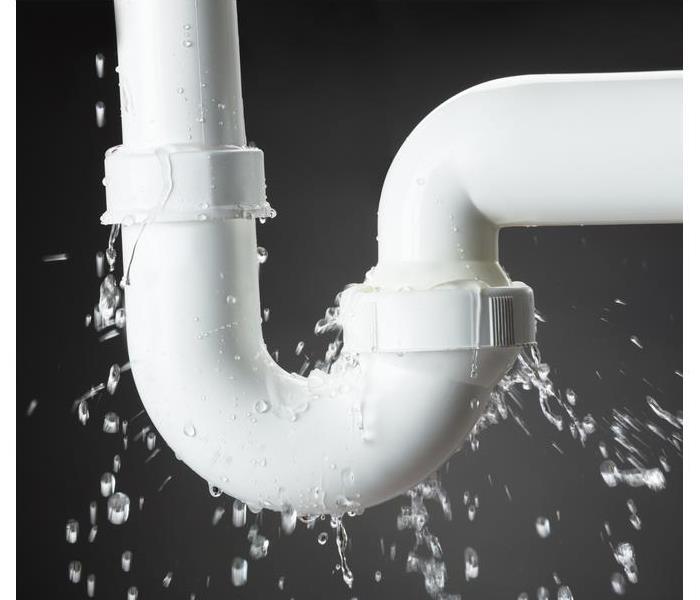 Leaking pipes and faucets is very common.
Leaking pipes and faucets is very common.
Avoid Plumbing Issues On Your Property
There are many unpleasant things that could bring business to a halt on your commercial property but leaking pipes and a puddle in the bathroom are some of the most annoying. One of the keys to avoiding plumbing issues on your property is preventative action against the most common problems.
Identifying Common Concerns
Naturally, it's best to identify the problems that tend to be common in Bloomingdale, IL, and across the country:
Leaking pipes and faucets is very common. After all, there are a lot of pipes running through large buildings, supplying water to sinks, toilets, and drinking fountains.
Toilets and drains tend to get blocked more often in commercial settings than in homes. This sometimes happens because inappropriate items are flushed or sent down the drain.
It's often difficult to keep water temperatures within a comfortable range because there's a heavy demand for water.
Clogs, leaks, and other types of damage, such as a pipe break, often cause a foul odor that escapes from drains throughout the building.
Your property insurance agent is a good source of information about the plumbing problems that you are most likely to experience.
Avoiding Trouble
After you identify the issues with the highest risk factor, the next step is learning how to prevent these common problems:
Avoid leaks by regularly checking faucets and watching for slow drips. Visually inspect pipes for signs of cracks, rust, lime deposits, or moisture.
Avoid clogs and a toilet backup by providing flushable toilet paper, napkins, and towels. Provide an appropriate and convenient way to dispose of waste. Place hair traps in the sink drain.
It's important to find the right balance when it comes to water temperatures in commercial settings. This means carefully selecting the size of your water heater or heaters. You may also need to use a combination of thermostatic mixing valves and tempering. Don't forget to check the pressure valve on a regular schedule.
When you can't avoid plumbing issues and leaking pipes, contact water damage cleanup and repair technicians to get your business back to its original condition. Remember that an early response prevents widespread damage.
Six Tips to Prevent Pipes in Your Home From Freezing
1/23/2022 (Permalink)
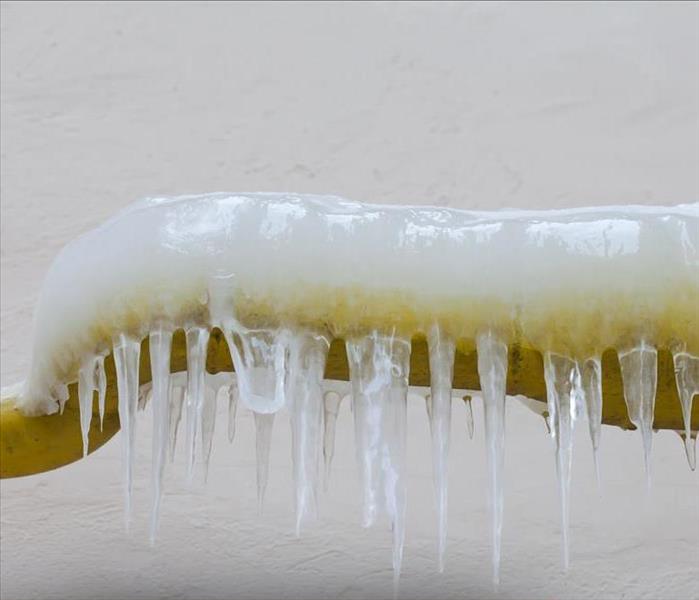 Prevent pipes in your home from freezing.
Prevent pipes in your home from freezing.
Popsicles and snowmen should be frozen. Ice cubes and glaciers should be frozen. Your home’s pipes should definitely not be frozen. Unfortunately, it can happen more often than anyone would like. Frigid winter temperatures affect more than just the great outdoors and if not properly protected, frozen pipes could cause a water disaster. Take a look at some ways to prevent a pipe freeze in Glendale Heights, IL.
Six Ways to Prevent Frozen Pipes
1. Warm up the rooms where water pipes are located
2. Open cabinet doors to allow heat to reach the pipes
3. Repair any cracks and holes that are open to the outdoors
4. Apply additional insulation around pipes
5. Use heating tape on faucets and pipes located outdoors or in unheated areas
6. Leave a faucet running a small stream or rapid drip during cold snaps
The obvious enemy to the formation of ice is heat. Keeping your home warm, even when you are away on vacation is vital to preventing pipe freeze. Just take care not to use space heaters in unoccupied areas. Allow your home to maintain a temperature of at least 60º at all times when a dip in the temperature is expected. Leave interior doors throughout your home open to allow warm air to circulate and leave cabinet doors open beneath sinks.
Filling in any holes, gaps, or cracks where frigid air comes through, can quickly drop the temperature and tempt problems. Insulating can prevent a pipe burst and is easy to do using split foam tubing made for the task. Heat tape can really help with pipes that are outdoors or in cold basements. Allowing an indoor faucet to dribble will help keep pipes open as well.
In the event you experience frozen pipes, a water damage repair specialist in Glendale Heights, IL, can help you reclaim your home and remediate any destruction water causes to your home's content or structure. But an ounce of prevention is still the best way to ensure that you won’t have to deal with any destructive results of cold weather.



 24/7 Emergency Service
24/7 Emergency Service





